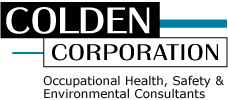A National Emphasis Program (NEP) was announced on July 13, 2023 by OSHA and detailed in Compliance Directive – Warehousing and Distribution Center Operations (CPL 03-00-026). The directive applies nationwide to warehousing and distribution centers, mail/postal processing and distribution centers, parcel delivery/courier services, and local delivery industries, as well as high injury rate retail establishments.
Warehousing and distribution centers have experienced growth in the past twelve years. From January 2011 to December 2021, the warehousing and distribution centers industry experienced a surge in employment, increasing from 668,900 employed to 1.9 million employed (seasonally adjusted) according to the Bureau of Labor Statistics. At the same time, the warehousing and distribution center industry has experienced occupational injuries and illness rates that are significantly higher, and in some sectors, more than twice the baseline for private general industry rates.
Among the serious safety and health hazards in warehouse and distribution center operations are struck-by, caught-in-between, slip, trip, and fall hazards; blocked aisles; means of egress; powered industrial vehicles, and other material handling equipment; heat stress hazards; chemical; and ergonomic hazards. OSHA defines these hazards as serious, which means they can result in death or serious physical harm.
OSHA may select workplaces for inspection under the three-year NEP if they are on a list of NAICS industry codes covered under this emphasis program. OSHA may also choose establishments liable for inspection from a second list, which consists of a limited number of retail establishments with the highest rates of injuries and illnesses resulting in days away, restricted duty or job transfer (the DART Rate). OSHA NEP related comprehensive safety inspections began on October 13, 2023.
State plans are required to adopt this emphasis program or establish a different program at least as effective as the federal model.
OSHA standards applicable to the warehousing industry are listed below:
1910 Subpart D -Walking Working Surfaces including ladders, stairways and dockboards
1910 Subpart E – Exit Routes and Emergency Planning
1910 Subpart F – Powered Platforms, Manlifts, and Vehicle-Mounted Work Platforms1910
Subpart G – Occupational Health and Environmental Control including ventilation and noise exposures
1910 Subpart H – Hazardous Materials including fuels, anhydrous ammonia, process safety management, and Hazardous Waste Operations and Emergency Response.
1910 Subpart I – Personal Protective Equipment
1910 Subpart J – General Environmental Controls
1910 Subpart K – Medical and First Aid
1910 Subpart L – Fire Protection
1910 Subpart N – Materials Handling and Storage
1910 Subpart O – Machinery and Machine Guarding
1910 Subpart P – Hand and Portable Powered Tools and Other Hand-Held Equipment
1910 Subpart S – Electrical
1910 Subpart Z – Toxic and Hazardous Substances including Hazard Communication
In addition, to the subject specific standards listed in the next posting, Section 5(a)(1) of the Occupational Safety and Health (OSH) Act, often referred to as the General Duty Clause, may be applied. This section requires employers to “furnish to each of their employees employment and a place of employment which are free from recognized hazards that are causing or are likely to cause death or serious physical harm to their employees.” Employers can be cited for violation of this section if a recognized serious hazard exists in their workplace and the employer does not take reasonable steps to prevent or abate the hazard.
Click here for a list of services that Colden provides to the warehouse and distribution center industry. For assistance with warehouse and distribution audits and OSHA NEP/REP compliance assistance, please reach out to Colden consultants at colden@colden.com or enter your inquiry here.
References:
https://www.osha.gov/news/newsreleases/national/07132023
https://www.osha.gov/sites/default/files/enforcement/directives/CPL_03-00-026.pdf
https://www.osha.gov/warehousing/standards-enforcement

